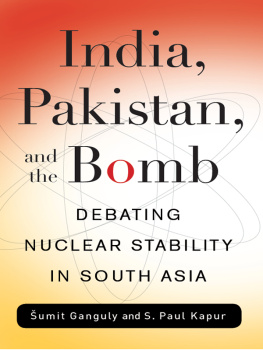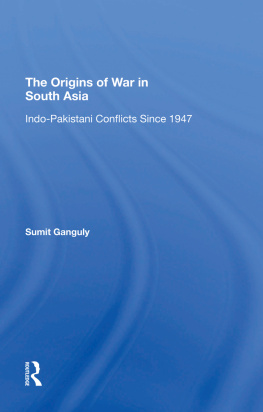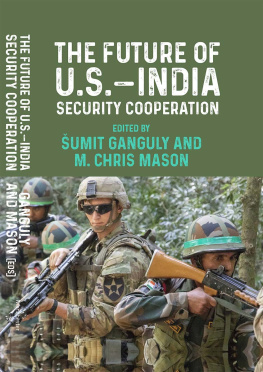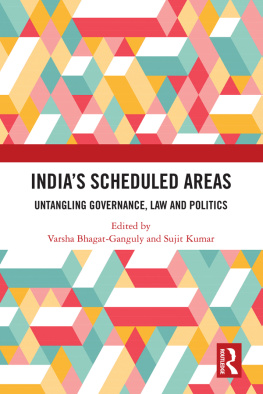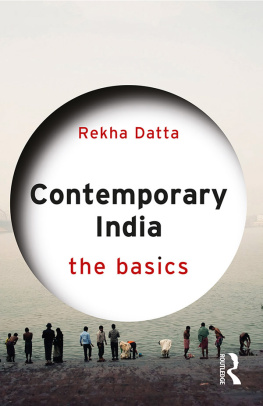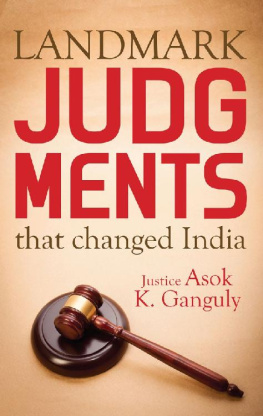Ganguly Sumit - Ascending India and Its State Capacity
Here you can read online Ganguly Sumit - Ascending India and Its State Capacity full text of the book (entire story) in english for free. Download pdf and epub, get meaning, cover and reviews about this ebook. City: India, year: 2017;2016, publisher: Yale University Press, genre: Politics. Description of the work, (preface) as well as reviews are available. Best literature library LitArk.com created for fans of good reading and offers a wide selection of genres:
Romance novel
Science fiction
Adventure
Detective
Science
History
Home and family
Prose
Art
Politics
Computer
Non-fiction
Religion
Business
Children
Humor
Choose a favorite category and find really read worthwhile books. Enjoy immersion in the world of imagination, feel the emotions of the characters or learn something new for yourself, make an fascinating discovery.

- Book:Ascending India and Its State Capacity
- Author:
- Publisher:Yale University Press
- Genre:
- Year:2017;2016
- City:India
- Rating:3 / 5
- Favourites:Add to favourites
- Your mark:
- 60
- 1
- 2
- 3
- 4
- 5
Ascending India and Its State Capacity: summary, description and annotation
We offer to read an annotation, description, summary or preface (depends on what the author of the book "Ascending India and Its State Capacity" wrote himself). If you haven't found the necessary information about the book — write in the comments, we will try to find it.
Ascending India and Its State Capacity — read online for free the complete book (whole text) full work
Below is the text of the book, divided by pages. System saving the place of the last page read, allows you to conveniently read the book "Ascending India and Its State Capacity" online for free, without having to search again every time where you left off. Put a bookmark, and you can go to the page where you finished reading at any time.
Font size:
Interval:
Bookmark:
Ascending India and Its State Capacity
Ascending India and Its State Capacity
Extraction, Violence, and Legitimacy
SUMIT GANGULY & WILLIAM R. THOMPSON
Yale UNIVERSITY PRESS/NEW HAVEN & LONDON
Copyright 2017 by Sumit Ganguly and William R. Thompson
All rights reserved.
This book may not be reproduced, in whole or in part, including illustrations, in any form (beyond that copying permitted by Sections 107 and 108 of the U.S. Copyright Law and except by reviewers for the public press), without written permission from the publishers.
Yale University Press books may be purchased in quantity for educational, business, or promotional use. For information, please e-mail (U.K. office).
Set in Minion type by Newgen North America.
Printed in the United States of America.
Library of Congress Control Number: 2016943627
ISBN: 978-0-300-21592-2 (hardcover : alk. paper)
A catalogue record for this book is available from the British Library.
This paper meets the requirements of ANSI/NISO Z39.48-1992 (Permanence of Paper).
10 9 8 7 6 5 4 3 2 1
For our mothers, Nandini Ganguly and Jacquelyn Thompson
Contents
ECONOMIC
POLITICAL
Acknowledgments
We gratefully acknowledge the financial assistance of the Smith Richardson Foundation in support of the writing of this book. Brandon Miliate and Nicolas Blarel, graduate students in the Department of Political Science at Indiana University, Bloomington, helped with the final logistics of this book manuscript, and we wish to thank them for their efforts. We are also indebted to Jaya Chatterjee and Ann-Marie Imbornoni at Yale University Press and freelancers Kate Davis and Fred Kameny for their assistance in getting this book into print.
ONE
The Indian States Capacity to Get Things Done
Long impoverished, India is on the rise in economic and military terms. Its gross domestic product is expanding faster than population growth, and India is becoming one of the worlds largest economies. Defense and foreign policies tend to expand in response to capability improvements. Indian foreign policy and military concerns, long centered on South Asia, have grown to encompass a much wider proportion of Indo-Pacific Asia. Indian ambitions have also expanded: a popular question is whether or when India will ascend to the worlds power elite and be accorded great power status.
Part of this great power discourse has to do with whether India has the appropriate prerequisites for great power status. Is its economy sufficiently large and sophisticated enough to pay for elite status? Is the Indian state strong enough to mobilize resources and make policies, as other great powers do? Do Indian armed forces have sufficient power-projection capabilities to support great power behavior? We understand why these questions are raised but we think they are misplaced. Historically, states have ascended to elite or great power status without satisfying minimal thresholds of attributes thought to differentiate the powerful from the less powerful. Once they gain greater military-political status, they either improve their capabilities or they stumble along with various weaknesses more or less intact. We assume that status-mobility processes have not changed all that much. India will either be promoted to the great power ranks or not, but it will not be determined by India first attaining some elite membership attributes.
We will certainly address this great power ascent issue, but it is not the principal part of the books motivation. Foremost, we are intrigued by the Indian state itself. Political scientists tend to focus on failed, weak, and strong states. Little attention is given to the in-betweenersthe states that are neither completely weak nor entirely strong. We utilize the great power theme only as an initial hook to look more closely at the Indian state. In particular, we want to use the opportunity to focus more precisely on what state capacity is about conceptually and empirically. Many discussions of state capacity either remain stuck at the conceptual level or skip it altogether and dwell solely on its measurement. Our preference is to start with a conceptual delimitation of state capacity (in our case, relying on K. J. Holstis analysis highlighting extraction, violence monopoly, and legitimacy; see ) and show how these multiple facets can be measured and compared with other states in the Indian context.
We claim no crystal ball about whether Indian economic growth will continue. We do not know to what extent Indias external and internal security will deteriorate. Nor do we know how Indias military capability expansion programs will fare. Obviously, we cannot even forecast whether or when India might ascend to great power status. But we do think that there are other, additional problems that could hobble Indias ability to get things done at home and abroad. We think Indias state capacity is just such a liability. Moreover, it is not just another liability. State capacity or the political capability to do things as a state is critical to continued economic growth, the development of military capabilities to project power and influence abroad, and the ability to maintain some semblance of political order at home. Without enough state capacity, all of these other goals may become unattainable.
Yet any attempt at assessing state capacity in India must necessarily take into account the markedly divergent capacities of the Indian state. There is little question, as many boosters of Indias rise have argued, And yet state capacity remains paradoxical in India. India does not possess a weak state, but neither does it have a strong state. Its state capacity falls in between the conventional weak-strong continuum. As a consequence, the Indian state manifests both strengths and weaknesses, sometimes simultaneously, sometimes intermittently.
For example, on January 31, 2012, the Indian Ministry of Defense (MoD) finally announced a clear-cut winner in the bidding war for the purchase of 126 medium multi-role combat aircraft (MMRCA) for the Indian Air Force (IAF). The winner was the French-made Rafale fighter jet. After years of deliberation and trials, the Ministry of Defense, based upon the evaluation and trials of the Indian Air Force, had short-listed the Dassault Rafale and the European consortium (composed of the Franco-German EADS, the United Kingdoms BAE Systems, and Italys Finmeccanica) Typhoon. In the end, the decision was made apparently on the basis of cost and the preference of IAF pilots. The total cost of the order was expected to run between US$15 and $20 billion.
The selection process, from start to finish, lasted five years. Though slow and cumbersome, the processunlike a number of major defense purchases, which had been tainted with accusations of graft and corruptionfrom a procedural standpoint was entirely aboveboard and professionally conducted.
On the same day that the Indian MoD announced this decision to make this extremely costly weapons system, it was also reported that
These two accounts bookend the paradox of the Indian state. India has the capacity, however cumbrous, to carry through a major defense acquisition subjecting it to the most demanding technical evaluation along with rigorous fiscal scrutiny. Yet it has failed dramatically to extend the benefits of primary education to the vast majority of its population. This is hardly surprising given that India until the 1990s had disproportionately emphasized tertiary over primary education. Even with a renewed emphasis on primary education, an important study comparing the PRC and India revealed that as recently as 2004, teacher absenteeism was as high as 25 percent.
Undoubtedly, the India of today is a far cry from the poverty-stricken, militarily weak, socially fractured, and diplomatically isolated country of the Cold War. Nevertheless, unless its leadership can tackle problems ranging from corruption to bureaucratic stagnation to political dysfunction, its hope for a solid global standing and great power status in the twenty-first century will remain just a hope. State capacity is about getting things done, and there are a plethora of things to get done in India, whether or not elite status in world politics is in the offing.
Next pageFont size:
Interval:
Bookmark:
Similar books «Ascending India and Its State Capacity»
Look at similar books to Ascending India and Its State Capacity. We have selected literature similar in name and meaning in the hope of providing readers with more options to find new, interesting, not yet read works.
Discussion, reviews of the book Ascending India and Its State Capacity and just readers' own opinions. Leave your comments, write what you think about the work, its meaning or the main characters. Specify what exactly you liked and what you didn't like, and why you think so.


